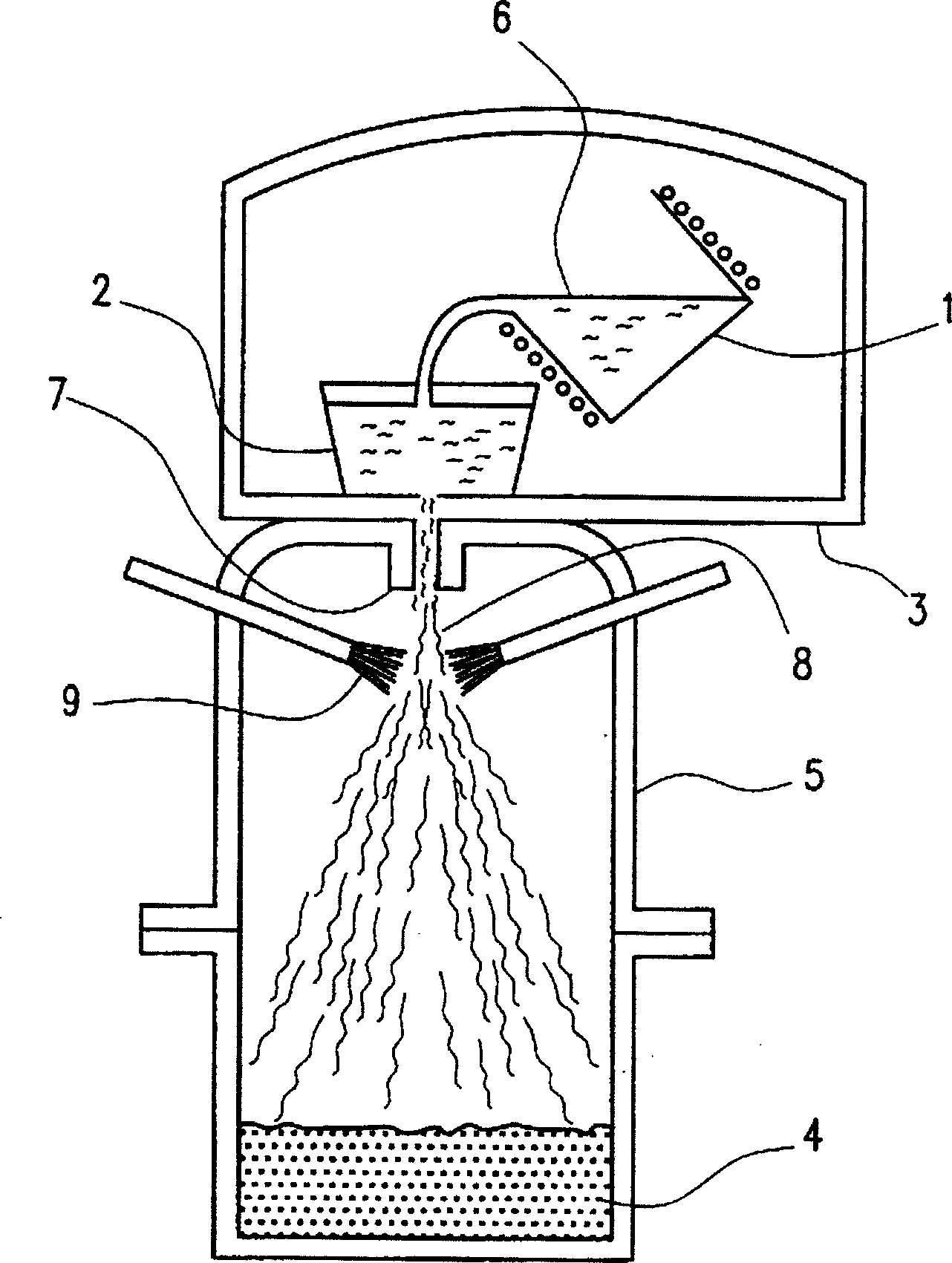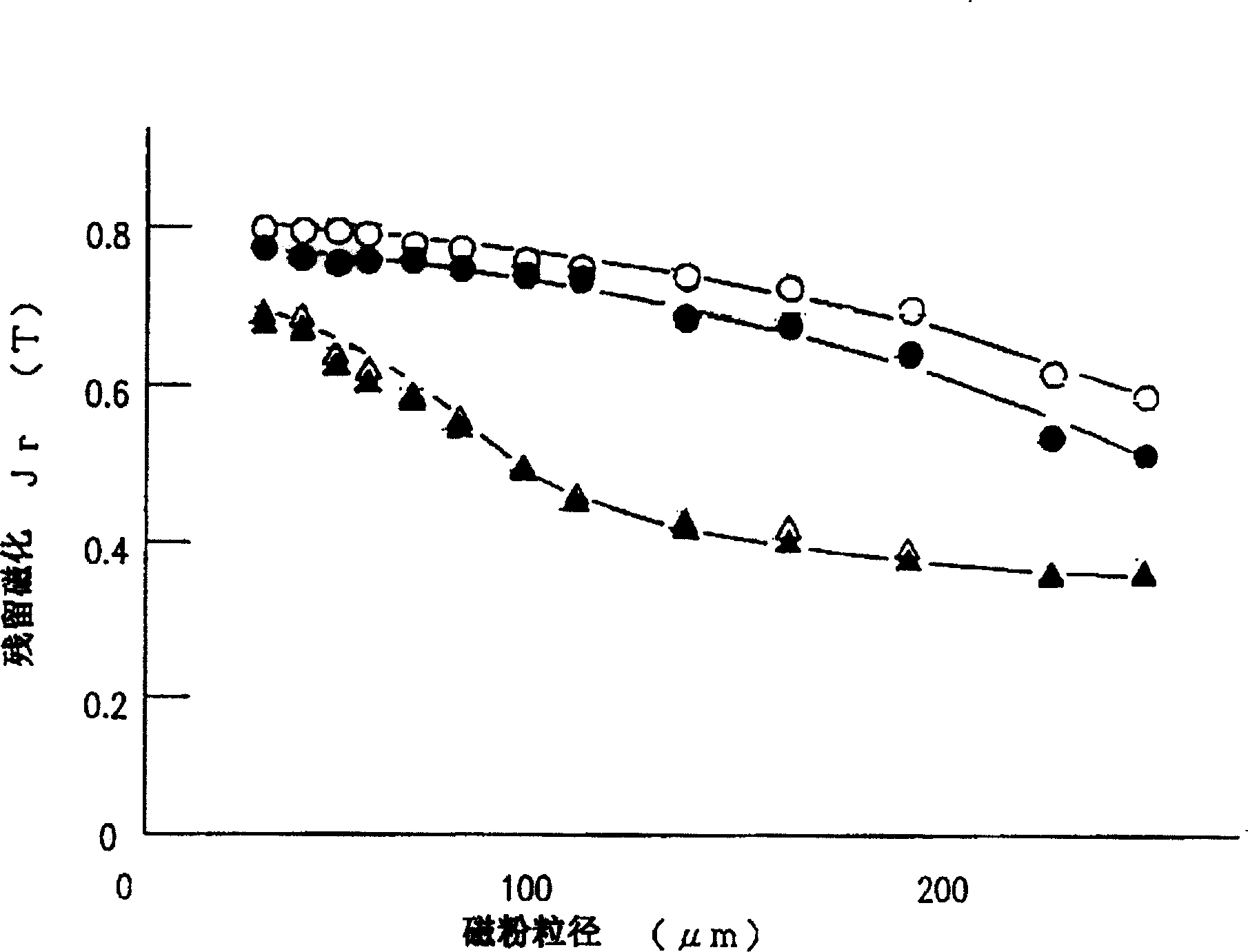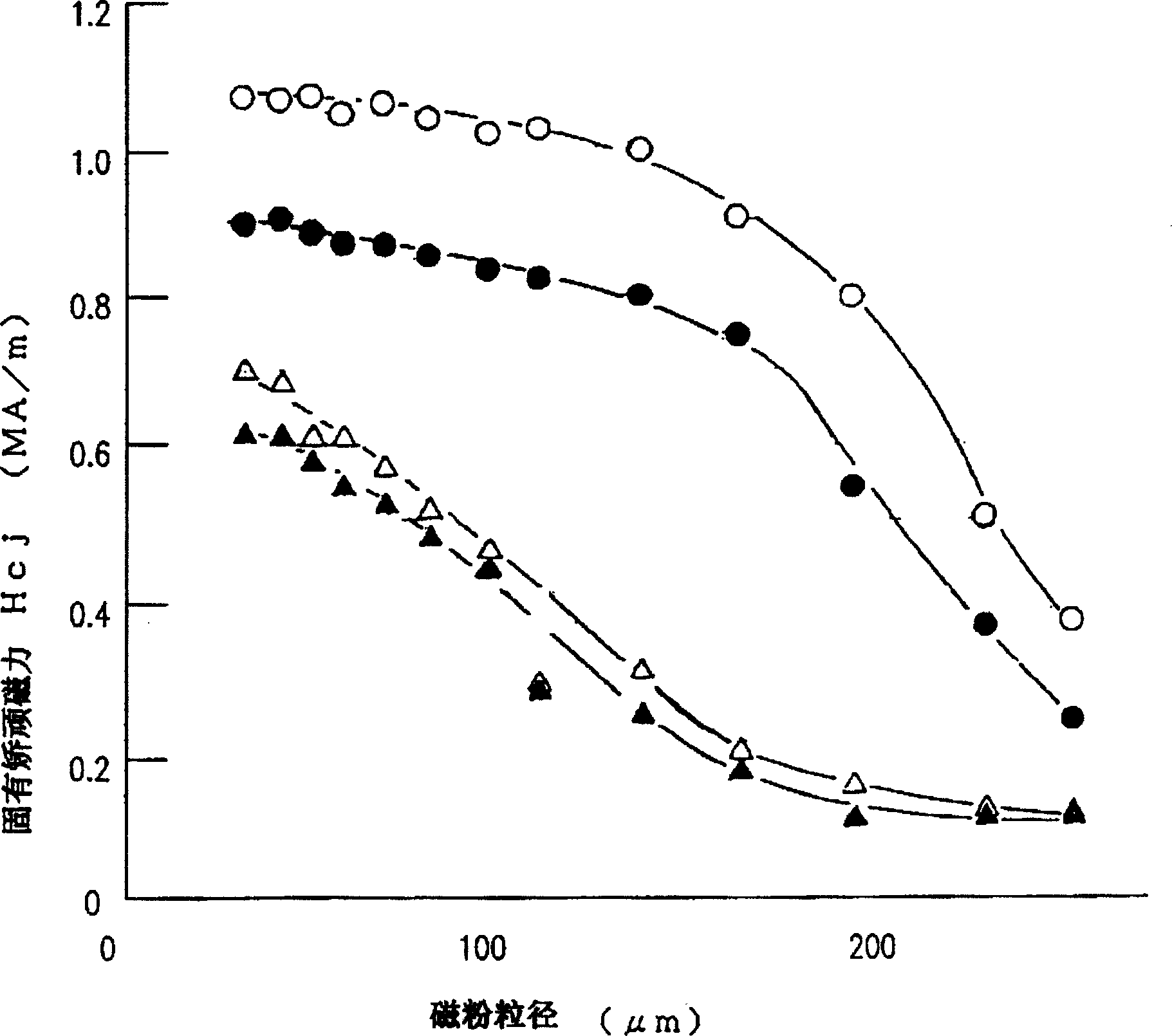Magnetic alloy powder for permanent magnet and manufacturing method thereof
A magnetic alloy, permanent magnet technology, applied in the direction of magnetic materials, magnetic objects, inorganic materials, etc., can solve the problems of deterioration of magnetic powder fluidity, flattening of magnetic powder shape, reduction of molding efficiency, etc., to achieve excellent fluidity and high coercivity. The effect of magnetism
- Summary
- Abstract
- Description
- Claims
- Application Information
AI Technical Summary
Problems solved by technology
Method used
Image
Examples
Embodiment 1
[0057] In this example, using master alloys having various compositions shown in Table 1 below, alloy melts were sprayed in an argon atmosphere to produce powders composed of spherical particles. The temperature of the alloy melt during spraying is about 1400-1500°C, and the temperature of the argon atmosphere is about 30°C.
[0058] Next, the thus-produced powder was classified with a sieve to obtain a powder with a particle diameter of 38 μm to 63 μm, and then the magnetic properties of the powder (residual magnetic flux density B r and coercive force H cJ ). Table 1 shows the evaluation results for sample Nos. 1 to 20. The values shown in Table 1 are values measured with a vibrating sample type magnetometer.
[0059] No.
Composition (mass%)
magnetic properties
Br(T)
h cJ (MA / m)
1
30.0Nd-69.0Fe-0.5B-0.5C
0.778
0.850
2
28.0Nd-69.0Fe-2.0Co-0.5B-0.5C
0.804
0.814
3
22.0Nd-8.0Pr-69...
Embodiment 2
[0075] In this example, powders were produced under the same conditions as in Example 1 using master alloys having various compositions shown in Table 3 below. The obtained spray powder is classified with a sieve to obtain a powder with a particle size of 38 μm to 63 μm, and the magnetic properties of the powder (residual magnetic flux density B r and coercive force H cJ ) for evaluation. Table 3 shows the evaluation results for sample Nos. 21 to 24.
[0076] No.
Composition (weight%)
magnetic properties
Br(T)
h cJ (MA / m)
21
30.0Nd-69.0Fe-0.98B-0.1S
0.765
0.805
22
30.0Nd-68.8Fe-1.0B-0.2Si
0.761
0.821
23
30.0Nd-68.8Fe-0.8B-0.2C-0.2S
0.755
0.845
24
30.0Nd-68.9Fe-1.0B-0.4P
0.771
0.810
[0077] In this embodiment, B is essential, and in addition to B, C, S, P, or Si is added. In this embodiment, the melt of an alloy containing Q (Q is an eleme...
Embodiment 3
[0080] The alloys of Sample Nos. 1, 3, 17, 18, 21, 22, and 24 shown in Table 1 and Table 3 above were quenched by a spraying method to be powdered. The temperature of the alloy melt during spraying was 1500° C., and other spraying conditions were the same for each sample. Then, the mass ratio (recovery rate) of the fine powder (particle diameter: 63 μm or less) contained in the sprayed powder to the whole was measured. The results are shown in Table 4 below.
[0081] Powder particles with a particle size of 63 μm or less
[0082] As can be seen from Table 4, the recoveries of samples Nos. 1, 3, 21, 22 and 24 were 70% or more, which was much higher than the recoveries of samples Nos. 17 and 18 of the comparative example. This means that the addition of C, S, P and / or Si helps to make the particle size of the spray powder smaller. The main reason for the particle size reduction is that the viscosity of the alloy melt during spraying is reduced by adding an appropri...
PUM
| Property | Measurement | Unit |
|---|---|---|
| particle diameter | aaaaa | aaaaa |
Abstract
Description
Claims
Application Information
 Login to View More
Login to View More - R&D
- Intellectual Property
- Life Sciences
- Materials
- Tech Scout
- Unparalleled Data Quality
- Higher Quality Content
- 60% Fewer Hallucinations
Browse by: Latest US Patents, China's latest patents, Technical Efficacy Thesaurus, Application Domain, Technology Topic, Popular Technical Reports.
© 2025 PatSnap. All rights reserved.Legal|Privacy policy|Modern Slavery Act Transparency Statement|Sitemap|About US| Contact US: help@patsnap.com



